Background Intro
Welcome to our blog, where we explore the world of eco-chic hair care. Are you ready to make sustainable beauty choices that will transform your life and your hair routine? In a world that values the environment, it's important to make conscious decisions for our well-being and the planet.
In this article, we'll guide you through the exciting realm of sustainable hair care, offering tips to help you make a positive impact without compromising on style or quality. If you're wanting to make beauty industry greener, your hair care routine is an easy place to start.
What is Eco-Chic Haircare/Sustainable Haircare?
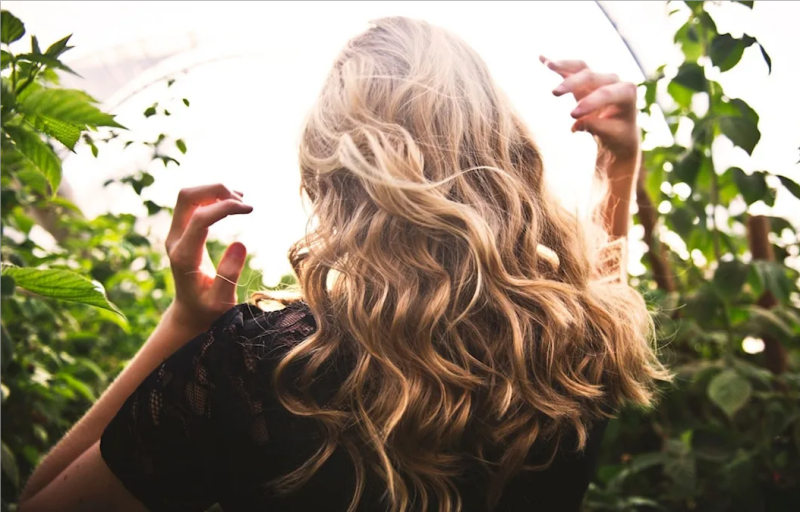
Eco-Chic Haircare, also known as Sustainable Haircare, focuses on using products made from natural resources. These products prioritize what’s good for both individuals and the environment, without the use of harmful chemicals. A brand adhering to this philosophy is also cruelty-free, avoiding animal testing and ingredients. Packaging is environmentally conscious, using recyclable or biodegradable materials. Water-saving measures are encouraged, such as shorter showers or water-less products. Additionally, these brands strive to use renewable energy sources and create products with a longer lifespan to minimize waste. By incorporating these products into your beauty routine, you can achieve eco-friendly practices while maintaining healthy and stylish hair.
Why We Adopt Sustainable Approach to Hair Care?

Adopting a sustainable approach to hair care routine offers numerous benefits, both for individuals and the environment. Here are some key advantages:
-
Healthier Hair. Sustainable hair products often contain natural and organic ingredients that are gentle on the hair. By avoiding harsh chemicals found in conventional products, sustainable options can help maintain healthier hair.
Related: Say Goodbye To Thinning Hair: Effective Strategies For Promoting Natural Hair Growth
-
Improved Scalp Health. Sustainable hair products are often formulated to promote scalp health by balancing pH levels and nourishing the scalp. This can help alleviate issues like dryness, itching, and dandruff, leading to healthier hair growth.
Related: Scalp Care for Optimal Hair Growth
-
Allergy and Sensitivity-Friendly. Sustainable products often avoid common allergens and irritants, making them suitable for individuals with sensitive skin or allergies. With natural and gentle ingredients, they can help mitigate reactions or irritation.
-
Personalized Solution. Sustainable hair care often encourages a more personalized approach, considering individual hair types and needs. Many brands offer a variety of options tailored for specific concerns such as dryness, frizz, or color-treated hair, allowing you to find products that work best for you.
Related: How To Create The Flawless Hair Care Regimen For Your Hair Type?
-
Personal Well-being. A sustainable hair care routine often aligns with overall wellness. Using natural and organic ingredients can reduce exposure to potentially harmful substances, creating a safer environment for both yourself and the planet.
-
Cost-Effective. While sustainable hair products may have slightly higher upfront costs compared to conventional ones, they often provide better value in the long run. Their high-quality formulations and concentrated formulas mean that a little goes a long way, resulting in less frequent repurchasing.
-
Reduced Environmental Impact. By choosing eco-friendly hair care options, you contribute to minimizing environmental harm. Sustainable brands focus on responsible sourcing, packaging waste reduction, water conservation, and energy efficiency, helping to reduce carbon footprints and protect ecosystems.
-
Ethical and Cruelty-Free. A sustainable hair care brand is committed to cruelty-free practices, ensuring that its products are not tested on animals. By supporting these brands, you promote ethical standards and animal welfare.
-
Supporting Sustainable Practices. By purchasing sustainable hair products, you support companies that prioritize fair trade, ethical sourcing, and environmentally conscious manufacturing processes. This helps create market demand for more eco friendly practices across the industry.
-
Positive Contribution to Sustainability. Adopting sustainable haircare is a tangible way to contribute to global sustainability efforts. By making conscious choices in your daily hair care routine, you become an active participant in reducing waste, conserving resources, and protecting the environment.
In summary, adopting a sustainable approach to hair care routine promotes healthier hair, reduces environmental impact, supports ethical practices, and contributes to personal well-being while making a positive difference in sustainability.
How Can We Switch to Sustainable Hair Care Routine?
Switching to a sustainable hair care routine involves making eco-friendly choices that are good for your hair and the environment. Here's a guide on how you can adopt a sustainable hair care routine.
Measure #1 Choosing Organic and Natural Hair Products
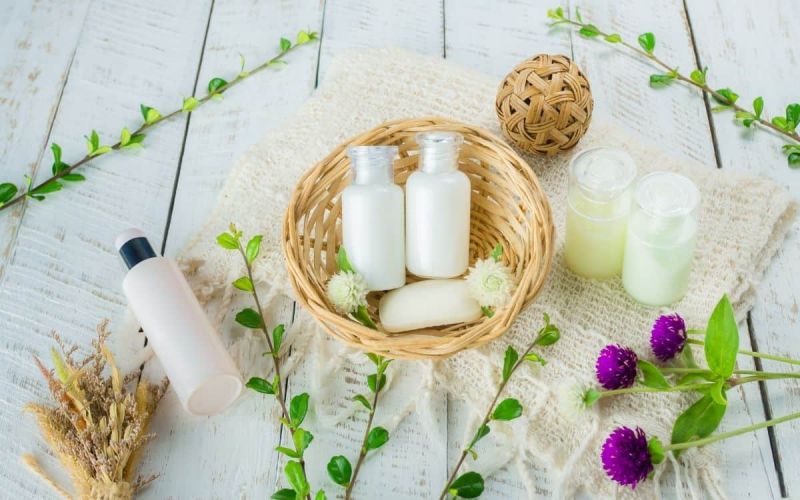
When it comes to choosing hair products, opting for natural options can offer several benefits. Here are some factors to consider when making your selection:
-
Ingredient transparency. Natural hair products often list their ingredients clearly on the label, allowing you to know exactly what you're putting on your hair. This transparency helps you avoid potentially harmful chemicals or synthetic additives.
-
Avoiding harsh chemicals. Many conventional hair products contain sulfates, parabens, and artificial fragrances, which can strip your hair of its natural oils and cause irritation. Natural products typically exclude these harsh chemicals, making them gentler on your hair and scalp.
-
Nourishing properties. Eco friendly hair products often utilize plant-based ingredients that provide essential nutrients and vitamins for your hair. Ingredients like aloe vera, coconut oil, argan oil, and shea butter can help moisturize, strengthen, and add shine to your hair without causing damage.
-
Environmentally friendly. Choosing eco friendly hair products supports sustainable farming practices and reduces the release of harmful chemicals into the environment. These products are usually biodegradable, leaving a smaller ecological footprint compared to their conventional counterparts.
-
Allergen considerations. If you have sensitive skin or allergies, eco friendly hair products may be a better choice. They typically have fewer allergens and irritants, reducing the likelihood of adverse reactions.
-
Cruelty-free. A natural hair care brand is committed to being cruelty-free, meaning their products are not tested on animals. If this is important to you, look for certifications such as Leaping Bunny or PETA's cruelty-free logo.
Everyone's hair is unique, so what works for fine hair or for someone else may not work for you. By choosing products that are made from natural and renewable resources, and are free from harmful chemicals, we can help to reduce pollution, conserve natural resources, and protect our health
Related: What Is The Best Wig For Baldness & Thinning Hair?
What Makes Hair Toppers The Wonderful Choice For Thinning Hair?
Measure #2 DIY Recipes for Homemade Hair Treatments

DIY hair treatments offer significant advantages, particularly in terms of cost-effectiveness and reducing packaging waste. These benefits make DIY treatments not only beneficial for your hair but also for your wallet and the environment. Here are a few simple DIY recipes for homemade hair treatments using natural ingredients:
► Coconut Oil Deep Conditioning Mask
Ingredients: 2 tablespoons of coconut oil (adjust quantity based on hair length), optional: a few drops of essential oil for fragrance (such as lavender or rosemary).
Instructions: Melt the coconut oil in a microwave or by rubbing it between your palms. Apply it evenly to damp hair, focusing on the ends. Leave it on for 30 minutes or overnight for an intensive treatment. Rinse thoroughly and shampoo as usual.
► Avocado and Banana Hair Mask
Ingredients: ½ ripe avocado, ½ ripe banana
Instructions: Mash the avocado and banana until smooth. Apply the mixture to damp hair, starting from the roots and working towards the ends. Leave it on for 20-30 minutes, then rinse thoroughly and shampoo as usual.
► Honey and Yogurt Hair Mask
Ingredients: 2 tablespoons of honey, 4 tablespoons of plain yogurt
Instructions: Mix the honey and yogurt together until well blended. Apply the mixture to clean, damp hair, ensuring even coverage from roots to ends. Leave it on for 20-30 minutes, then rinse thoroughly and follow with conditioner if desired.
► Apple Cider Vinegar Rinse
Ingredients: 1 part apple cider vinegar, 3 parts water
Instructions: Dilute apple cider vinegar with water in a spray bottle or container. After shampooing and conditioning your hair, apply the mixture to your scalp and hair. Gently massage it into your scalp and let it sit for a few minutes. Rinse thoroughly with water.
It's important to do a patch test before applying any homemade hair treatment to ensure you're not allergic to any of the ingredients.
Measure #3 Sustainable Styling Tools and Accessories
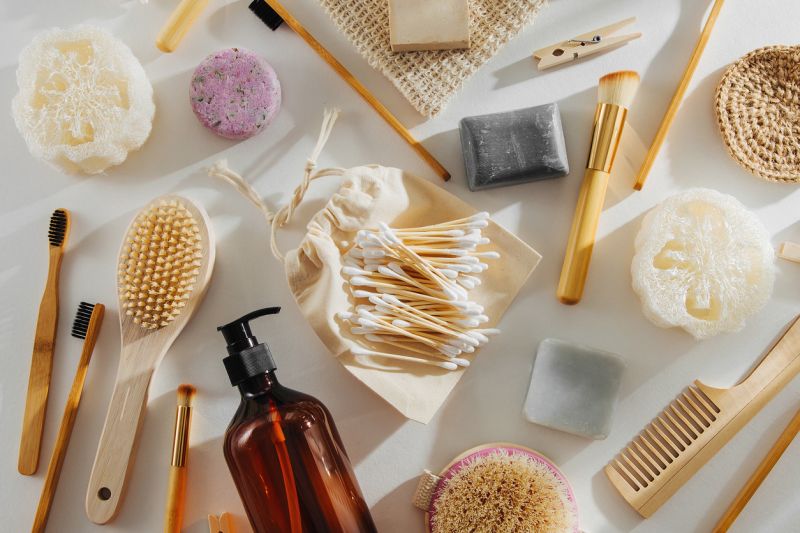
Cutting down heat styling is the easiest way to make your hair care routine a lot kinder to the planet. Make your hair care routine more sustainable by using fewer products and reducing the use of hot tools. Here are some sustainable alternatives to consider:
-
Bamboo Hairbrushes. Choose hairbrushes made from sustainable bamboo instead of plastic. Bamboo is a fast-growing, renewable resource that is biodegradable and has a lower environmental impact.
-
Wooden Combs. Similarly, opt for combs made of natural resources instead of plastic ones. Wooden combs are durable, eco-friendly, and gentle on the hair.
-
Recycled or Biodegradable Hair Ties. Traditional elastic ties contribute to plastic waste. Look for ties made from recycled materials or biodegradable alternatives like cotton, natural rubber, or bamboo fabric.
-
Metal Hair Clips. Instead of using plastic clips, consider metal clips made from stainless steel or other recyclable metals. They are durable, long-lasting, and can be easily recycled.
-
Natural Fiber Towels. Swap out synthetic towels for those made from natural fibers like cotton or bamboo. These towels are highly absorbent, soft, and renewable.
-
Eco-Friendly Styling Tools. Look for eco-friendly versions of heat styling/hot tools such as curling irons, straighteners, and hair dryers. Some brands offer energy-efficient options that consume less electricity and minimize their carbon footprint.
-
Sustainable Packaging. Consider brands that prioritize recyclable packaging by using recycled materials or minimal packaging. Look for products that come in reusable or recyclable containers.
-
Second-hand or Vintage Accessories. Consider shopping for hair accessories at thrift stores or online second-hand marketplaces. This helps extend the lifespan of existing items and reduces the demand for new products.
Sustainable hair styling tools and accessories may require a bit of research to find the right options for you. Prioritize durability, recyclability, and materials that have a lower environmental impact. By choosing sustainable alternatives, you can reduce waste and contribute to a more eco-friendly approach to hair styling.
Measure #4 Water Conservation Tips for Haircare
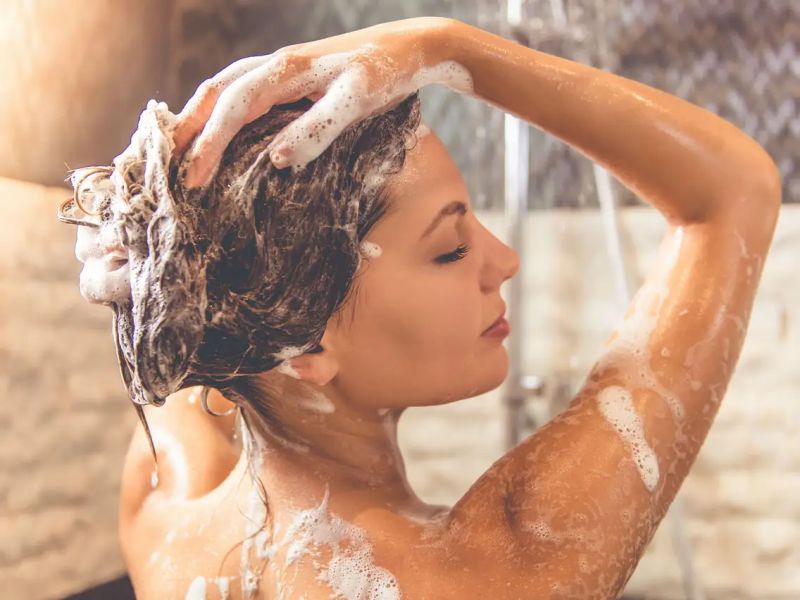
Conserving water during the hair care process is essential to minimize the impact on the environment. Here are some tips to help you save water while still maintaining healthy hair:
-
Limit shower time. Shortening your showers can significantly reduce water usage. Aim to complete your sustainable hair care routine efficiently within a reasonable timeframe.
-
Use a low-flow showerhead. Installing a low-flow showerhead can help conserve water without sacrificing water pressure. These showerheads use less water per minute compared to conventional ones, resulting in substantial water savings.
-
Turn off the water. When applying shampoo and conditioner, turn off the water to minimize unnecessary water flow. Only turn it on when rinsing your hair.
-
Opt for a dry shampoo. Dry shampoos are a waterless alternative that refreshes and absorbs excess oil from your hair. They come in powder or spray form and can be used between washes, reducing the need for water-intensive hair care routines.
-
Wash hair less frequently. Consider washing your hair every other day or even every few days, depending on your hair type. This allows your scalp to maintain its natural oils, reducing the frequency of water-intensive hair washing.
-
Use water-efficient hair tools. Look for hair care products designed to save water. For example, some shower caps are specifically designed to prevent water from entering while washing your body, allowing you to skip rinsing out hair products. Additionally, the leave in conditioner can be used sparingly to reduce water usage.
-
Collect and recycle water. While waiting for the water to warm up in the shower, place a bucket or container to collect the cold water. This water can be used for tasks like watering plants or flushing toilets, minimizing waste.
-
Don't let water run unnecessarily. When brushing your teeth or applying hair products, turn off the faucet until needed. Leaving the water running during these activities wastes a significant amount of water over time.
-
Optimize water temperature. Cooler showers with warm water require less electricity from your hot water heater and often cause you to take shorter showers, decreasing energy output and water usage. Taking cooler showers saves energy, conserves wate, and makes hair healthier.
By implementing these detailed water conservation tips, you can make a positive impact on water conservation while maintaining healthy hair. Of course, you don't have to cut back on showering altogether, but limiting your wash days can make all the difference.
Measure #5 Eco-Friendly Salons and Professionals
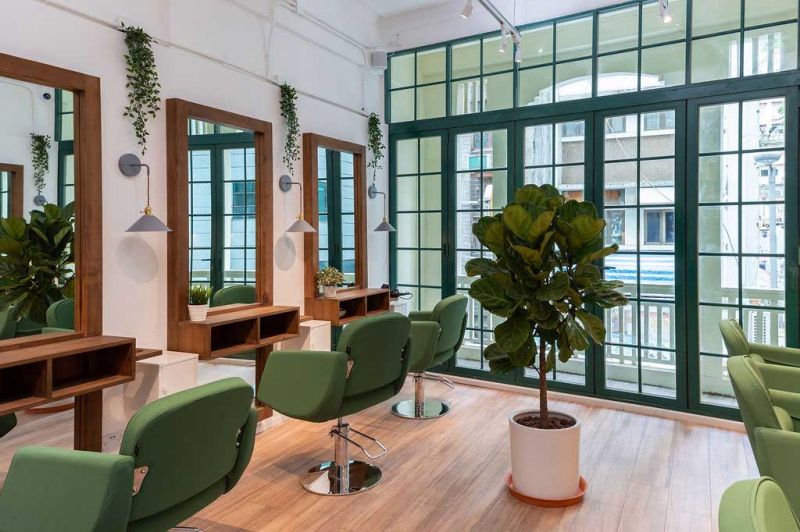
Eco-friendly hair salons and professionals are becoming increasingly popular as people are becoming more conscious of their impact on the environment. These establishments and individuals prioritize sustainability, reducing waste, and using products that are less harmful to both the planet and human health. Here are some key aspects of eco-friendly salons and professionals:
-
Sustainable practices. A sustainable salon focus on implementing sustainable practices throughout its operations. This includes using energy-efficient lighting and appliances, conserving water, and recycling or upcycling materials whenever possible. It may also invest in renewable energy sources like solar panels to power its establishments.
-
Non-toxic products. Eco-friendly hair expert use haircare, skincare, and other beauty products that are made from natural and non-toxic ingredients. They avoid chemicals such as formaldehyde, parabens, sulfates, and synthetic fragrances. Instead, they opt for organic, plant-based, cruelty-free, and biodegradable alternatives.
-
Reduced water usage. Water is a precious resource, and a eco-friendly salon implements measures to minimize water consumption. This can include using low-flow showerheads and faucets, encouraging clients to skip unnecessary hair washes, and utilizing water-saving techniques during hair treatments.
-
Waste reduction and recycling. A sustainable salon strives to reduce waste by adopting recycling and composting practices. It may recycle materials such as plastics, paper, and glass, and compost organic waste such as hair clippings and leftover plant matter. Additionally, some salons participate in programs that allow them to recycle or repurpose used hair foils, plastic bottles, and other product packaging.
-
Education and awareness. Eco-friendly salon professionals not only practice sustainable methods but also educate their clients about environmentally friendly choices. They share information on how to maintain healthy hair and skin without compromising the environment, and recommend products and practices that align with their sustainability goals.
-
Community involvement. Many eco-friendly salons actively engage in community initiatives and events that promote sustainable living and environmental awareness. They may collaborate with local organizations, participate in eco-friendly campaigns, or support green projects to contribute to a more sustainable future.
By embracing these principles, eco-friendly salons and professionals are greatly contributing to the sustainability of the beauty industry and the enhancement of the quality of the environment.
Measure #6 Recycling and Disposal of Haircare Products
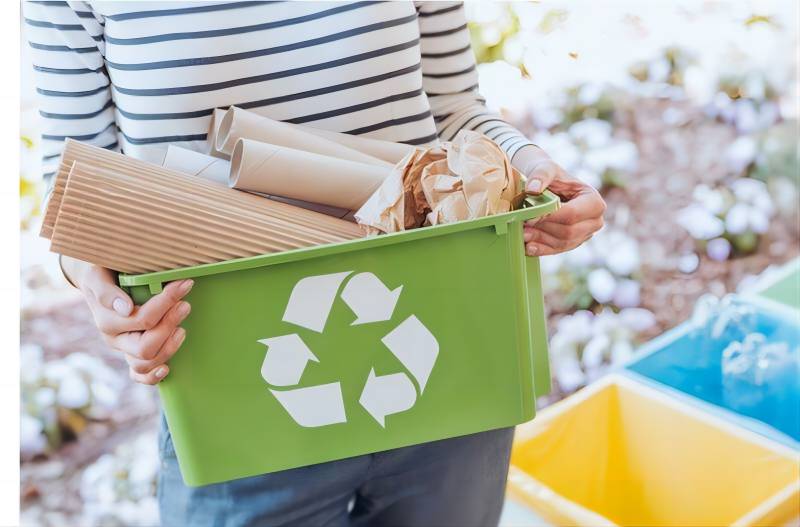
When it comes to recycling and disposing of haircare products, there are a few key considerations to keep in mind. Here are some guidelines for different haircare items:
-
Shampoo and conditioner bottles. A shampoo bottle or conditioner bottle made of plastic can usually be recycled with other household plastic containers. Rinse out these plastic bottles thoroughly before recycling them. Unsure whether you can recycle your shampoo bottle? Check the label. If you see a triangle of arrows, the container is safe to recycle. Shampoo and conditioner bars are an easy eco-friendly option that's good for your hair and the environment.
-
Hair styling product containers. Similar to shampoo and conditioner bottles, empty containers of hair styling products like gels, mousses, and sprays made of plastic can typically be recycled. Always ensure these bottles are clean and free of any remnants of product before recycling.
-
Aerosol cans. Some hair sprays, dry shampoos, and other haircare products come in aerosol cans. These cans are typically made of steel or aluminum and can be recycled. However, be sure to check with your local recycling program to confirm if they accept empty aerosol cans.
-
Hairbrushes and combs. Hairbrushes and combs made of plastic can be challenging to recycle due to their mixed materials (plastic bristles and handles). It's best to check with your local waste management facilities to see if they accept these items for recycling. If they don't, consider donating gently used brushes and combs to charities or organizations that may be able to repurpose them.
-
Hairdryers and electrical tools. Hairdryers, straighteners, curling irons, and other electrical hair tools should not be disposed of in regular trash bins as they contain electronic components. Most communities have designated e-waste collection sites where you can drop off such items for proper recycling.
-
Hair color and dye. Hair dye and color kits often come in plastic bottles with chemical ingredients. These products should not be poured down the drain as they can harm water systems. Check with your local hazardous waste collection facility to find out how to safely dispose of these items, as they may need to be treated as hazardous materials.
By following this guide, you can effectively measure and improve the recycling and disposal of haircare products. We can also seek out products that use biodegradable and recyclable packaging, which helps to reduce waste and promote sustainability.
Final Thoughts
Congratulations on completing our eco-chic haircare journey! Now you're ready to transform your routine with sustainable choices that make both your hair and the planet happy.
Now, it is the perfect time to re-evaluate your beauty routine and find out how you can make it more sustainable. With the above tips, you'll be able to care for your locks in a more eco-friendly manner without breaking the bank. Remember, small changes make a big difference!
Images credit: Google, Pinterest.
